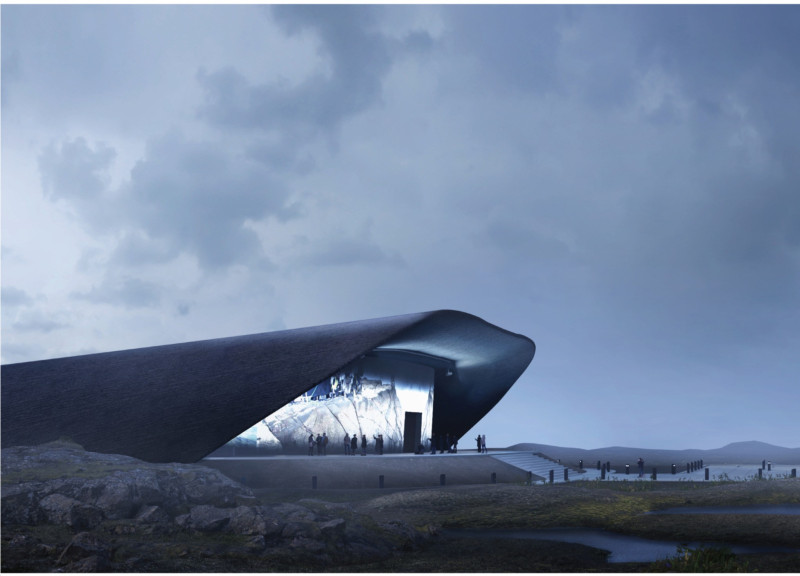5 key facts about this project
The design is characterized by a series of interconnected spaces that encourage exploration and engagement. The layout consists of dedicated areas for viewing films, informal gathering spots, and administrative facilities. The architectural form utilizes flowing curves that reflect the surrounding landscape, providing a harmonious relationship between the building and its environment.
Sustainable aspects of the project include operational systems such as geothermal heating and rainwater harvesting. These features align with contemporary architectural trends that prioritize ecological impact while ensuring functional efficiency. A strong emphasis on using locally sourced materials, including fly ash concrete, recycled steel, and local stone, enhances this sustainability narrative.
Design Elements that Differentiate the Pavilion
One of the distinguishing features of the Jarðar Pavilion is its unique spatial organization that seeks to immerse visitors in the cinematic experience. The auditorium spaces are designed with acoustics in mind, featuring specially crafted surfaces that enhance sound quality. This focus on auditory experience sets the pavilion apart from typical cultural venues.
Additionally, the integration of social spaces like the café and bar area promotes community interaction, inviting visitors to discuss and engage with the films and each other. This approach acknowledges the importance of social engagement in the appreciation of cinema, drawing attention to the narrative dimensions of film in a shared context.
Innovative Architectural Techniques
The pavilion employs innovative structural techniques, particularly a shell-like design that allows for significant structural resilience while creating expansive interior spaces. The curvature not only provides aesthetic value but also plays a critical role in the building's performance, optimizing natural light and sound distribution.
This architectural design responds to the local climate and site conditions, demonstrating a thoughtful approach to contextual relevance. The combination of carefully planned circulation paths and distinct zones invites visitors to navigate through the pavilion in a way that enriches their experience of both the space and the art it showcases.
For those interested in a deeper understanding of the Jarðar Pavilion and its architectural plans, sections, and designs, a detailed project presentation is available for exploration. The insights gained from reviewing these elements can enhance appreciation for the architectural ideas and strategies employed in this significant cultural project.


























